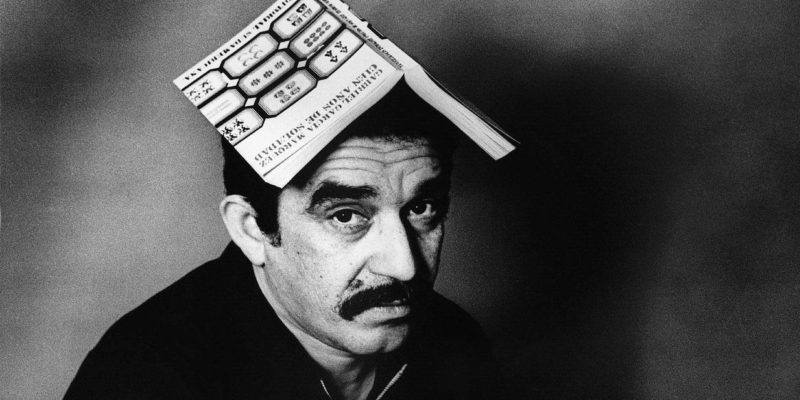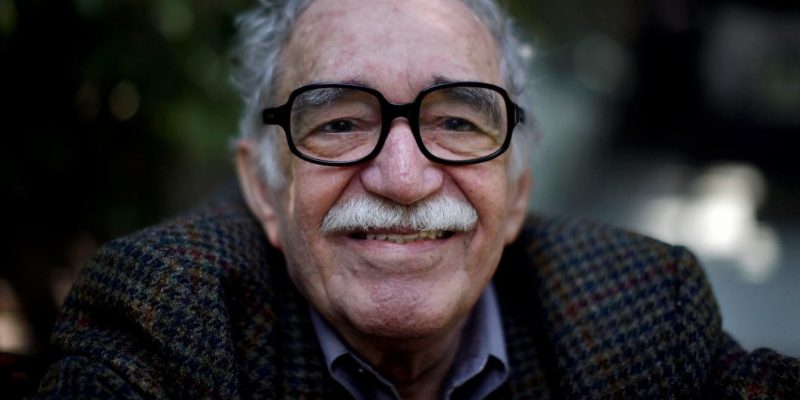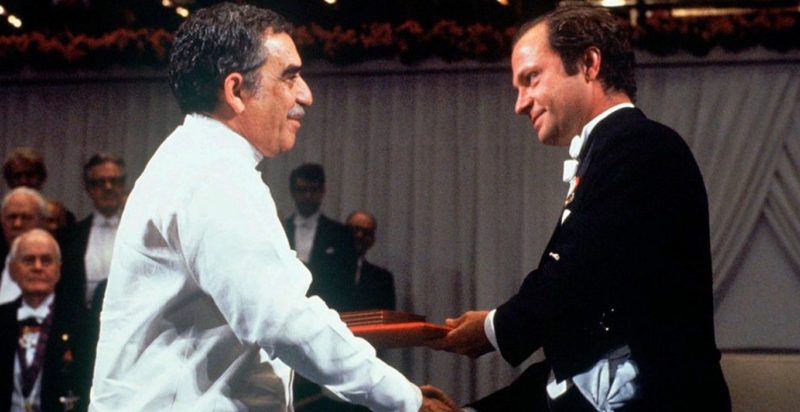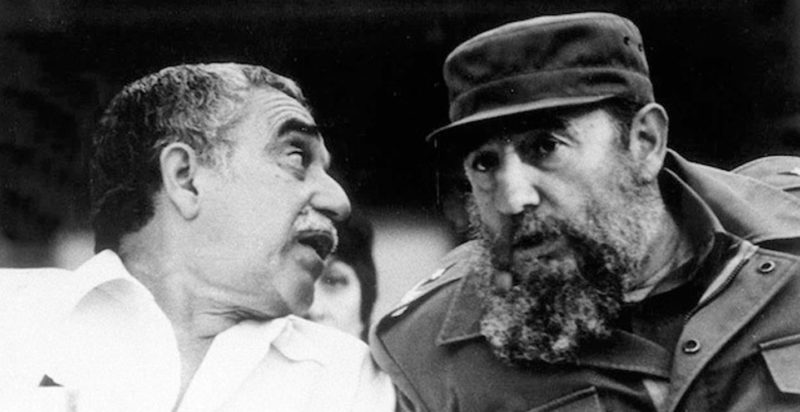We explain who Gabriel García Márquez was, what his career was like and his literary influences. In addition, its characteristics, works and awards.
Who was Gabriel Garcia Marquez?
Gabriel García Márquez, known as Gabo —pseudonym by which editor Eduardo Zalamea Borda, director of the newspaper El espactador , would call him —was a Colombian journalist, writer, screenwriter and editor , considered the greatest exponent of literary magical realism and one of the most famous writers in the country.
His work is among the best known on the Latin American continent , especially his novel One Hundred Years of Solitude (1967), winner of numerous international awards, and is part of the so-called " Latin American Boom " , as it became known in Spain and in the world at the time. wave of Latin American writers that emerged in the 1960s and promoted by the Spanish literary agent Carmen Balcells.
García Márquez was very popular both for his literary and journalistic genius, as well as for his openly leftist political positions . His friendship with Cuban leader Fidel Castro was known and controversial inside and outside the literary world.
Birth of Gabriel Garcia Marquez
Gabriel José de la Concordia García Márquez was born in Aracataca , a Colombian town in the department of Magdalena, on March 6, 1927, the son of Gabriel Eligio García and Luisa Santiaga Márquez.
His upbringing was initially spent with his grandparents , until he was later able to move with his parents to Sucre, in Barranquilla, in 1929.
Brief Biography of Gabriel Garcia Marquez

García Márquez was a shy and serious young man , little given to physical activities , who wrote humorous poems and drew comic strips in classes at the boarding school where he studied in Barranquilla.
He began law studies at the National University of Colombia in Bogotá, and in those years he published his first story: "The Third Resignation" in the newspaper El Espectador .
In March 1958, he married Mercedes Barcha , daughter of the apothecary of his town in Barranquilla, with whom he had two sons: Rodrigo and Gonzalo.
He did not finish his law degree , as the university was closed after the Bogotazo riots, so he decided to dedicate himself fully to journalism . He never finished his higher studies.
Journalistic work of Gabriel García Márquez

García Márquez began as a journalist in the newspaper El Universal , then in El Heraldo and in 1961 he settled with his wife and their first son in New York, as a correspondent for the Latin press.
However, pressure and threats from Cuban dissidents in the country and from the CIA forced him to move to Mexico City , where he lived most of his life. His links with Fidel Castro and his political positions earned him the classification of "subversive" by the US government .
Literary influences of Gabriel García Márquez
García Márquez was close to the Grupo de Barranquilla, a literary gathering that operated between 1940 and the end of the 50s. There he was able to read the great Anglo-Saxon realist narrators: Ernest Hemingway, Virginia Woolf, James Joyce and especially William Faulkner , who represented a huge influence on his own work .
He was also an admirer of the tragedies of ancient Greece , such as those of Sophocles, and on more than one occasion he confessed the importance that the Colombian iconoclastic poetic movement called "stone and sky" of 1939 had for him.
Literary characteristics of his work

His work is mainly part of magical realism , a narrative movement characterized by the coexistence of fantastic or mythical phenomena in a realistic story and of which García Márquez is the greatest exponent together with the Guatemalan Miguel Ángel Asturias.
In the case of Gabo, his literary project sought to reconcile his grandmother's childhood stories with his political and Latin American concerns. For that, he takes up the “marvelous real” enunciated by the Cuban Alejo Carpentier. His style generated both massive support and a gigantic audiovisual success, as well as accusations of exoticism. To everything he always answered that there was not a single line in his novels that was not inspired by reality.
Main literary works of Gabriel García Márquez
García Márquez's narrative work is mainly composed of novels, short stories , journalistic reports , memoirs, television scripts, dramatic pieces and fictionalized reports. His best known pieces are:
- The colonel has no one to write to him (novel, 1961)
- One Hundred Years of Solitude (novel, 1967)
- Chronicle of a Death Foretold (novel, 1981)
- Love in the time of cholera (novel, 1985)
- Narrative of a castaway (fictional reportage, 1970)
- Big Mama's Funerals (short stories, 1962)
- Blue Dog Eyes (short stories, 1972)
- Twelve Pilgrim Tales (short stories, 1992)
- Live to tell the tale (memoir, 2002)
Gabriel Garcia Marquez Awards & Accolades

García Márquez won numerous awards that celebrated his thought and his work, among which the following stood out:
- Nobel Prize for Literature in 1982.
- Esso Novel Prize in 1961.
- Romulo Gallegos Award in 1972.
- Honorary Doctorate from Columbia University in New York in 1971.
- Aztec Eagle Award of Mexico (1982).
- Medal of the French Legion of Honor in Paris (1981).
- His birth house in Aracataca was rebuilt in 2010 and turned into a museum in his name.
- In 2008, a cultural center bearing his name was built in Mexico.
- In 2015 his face appeared on a new series of Colombian banknotes.
Political militancy of García Márquez

Gabo adhered to a socialist vision of the world , without being a member of any political party or assuming himself as a communist . He sympathized, like many intellectuals of the time, with the Cuban Revolution led by Fidel Castro, with whom he maintained years of friendship.
At the same time he traveled to the countries of communist Eastern Europe : Poland, Czechoslovakia, East Germany , Hungary, and the USSR , later writing chronicles expressing his disagreement with what was happening there.
The Nobel acceptance speech was titled The Solitude of Latin America and there he expresses many of his political and philosophical considerations regarding his vision of the future of the continent.
García Márquez in fiction
García Márquez appears as a fictional character in the novels Cartagena (2015) by Claudia Amengual, and The Song Writer . Many of his works have also been transferred to film and television fiction.
Death of Garcia Marquez
García Márquez died in Mexico City in April 2014, diagnosed with lymphatic cancer. With his death, three days of mourning were decreed in Colombia.
The above content published at Collaborative Research Group is for informational and educational purposes only and has been developed by referring reliable sources and recommendations from technology experts. We do not have any contact with official entities nor do we intend to replace the information that they emit.
Passionate about understanding and contributing to a world that does not stop changing. New forms of Work, Sustainability and Technology. For many years he has worked as a creative for large international companies. He has a Ph.D. in information technology and he has been doing quantitative research in the interdisciplinary areas of information systems, cyber security, data analytics and artificial intelligence. He continue to look for creative solutions through technology to help companies to be more humane and sustainable..
Leave a reply
Your email address will not be published. Required fields are marked *Recent post

Sport: What Is It, Types, Risks, Features, Characteristics and Examples

Dogs: Emergence, Features, Characteristics, Feeding and Breeds

Story: Definition, Elements, Structure, Features and Characteristics

